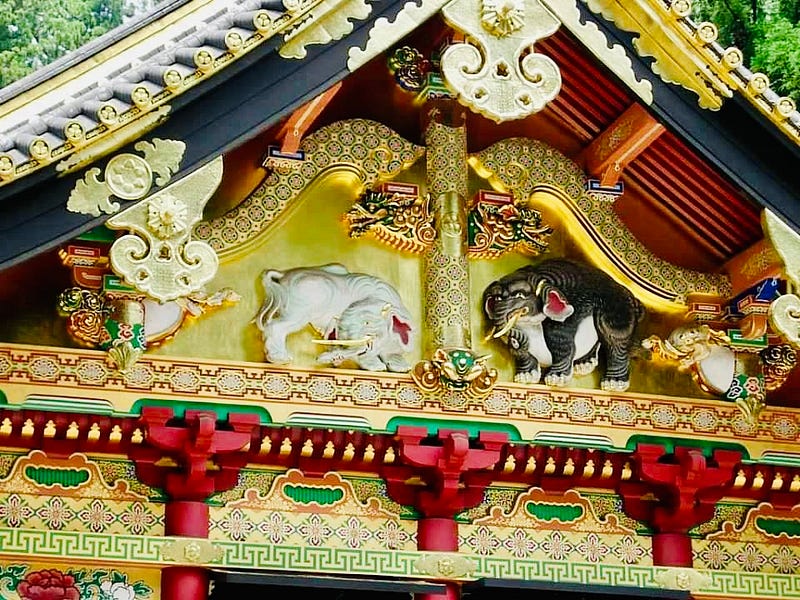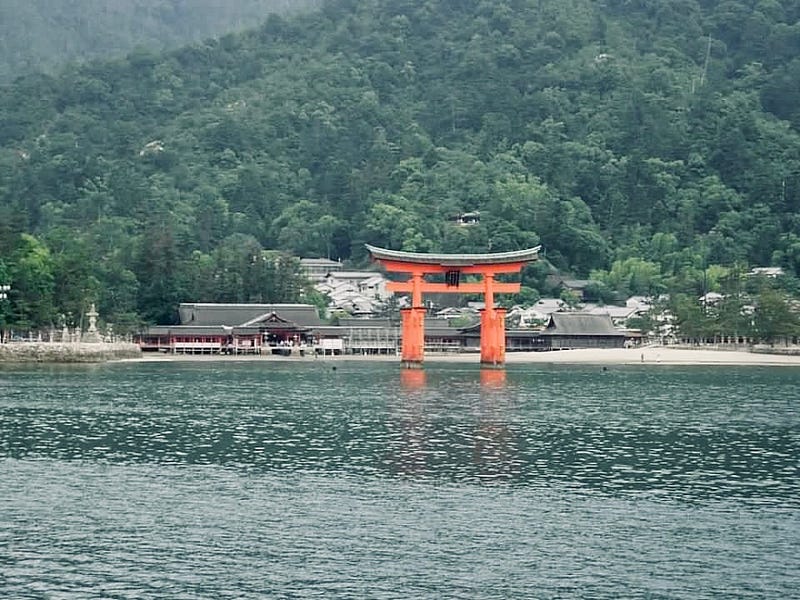Dispatches from Tomorrow: Nikko
Sixteen years ago, I studied abroad in Japan for six weeks. “Nikko” is the second of several essays I wrote a year later

Sixteen years ago, I studied abroad in Japan for five weeks. It was one of those experiences that you know is probably going to change your life, but you never really see just how much it did affect you until years later. With the Tokyo 2020 Olympics just starting, I’m feeling nostalgic, even if the Japan I experienced more than a decade ago is probably very different from the one that exists now. I’m also fairly certain that there is probably a lot that hasn’t changed, either, however.
So I’m sharing some of the writing I did after my trip, initially as part of a Creative Nonfiction college course the following year, if only to remind myself that I’ve come a long way as a writer but still have far to go. I’ve previously shared Hiroshima in June here, with much of the same caveats that this is a piece I wrote when I was very young. However, with these pieces, I am making small edits and additions for accuracy and clarity looking back fifteen years after writing them. I’m also adding some of my terrible pictures from my very first digital camera, because why not. In this essay, I got real experimental (for me, anyway) in that third paragraph, so please just bear with me.
I may write some new stuff, too, looking back at old journal entries and cringing at how much of a self-centered jerk I used to be while instantly recognizing what I later learned were coping mechanisms and masking for undiagnosed ADHD. More on that, eventually.
Anyway, here’s “Nikko,” which is not just about the shrines at Nikko, but also about the torii gates of Miyajima, Shinto animism, Buddhist funerary rites, and trying not to be an asshole American Abroad but maybe not trying hard enough:

“One Cannot Understand Magnificence Until He Has Seen Nikko.”
I curse myself every day of my life for not sneaking a camera into Rinnō-ji Shrine, one of many resplendent shrines and temples at Nikko, a UNESCO World Heritage Site north of Tokyo in Tochigi Prefecture and home to mausoleums of the Tokugawa Shoguns since the 17th century.
I know, I know — it’s the ultimate cross-cultural sin, violating the sanctity of a truly sacred space for your own personal enjoyment. I like to think I’m above that kind of crass flouting of international understanding and mutual respect, because like my sixth grade Math/Social Studies teacher (yeah, I went to public school, and no, I’m not mad about it) Ms. Zambia Nkrumah reminded us constantly, I am a student of the world.
But there are still moments when I stop and remember and despair at not sneaking a picture as quiet murmuring Japanese couples creased as the mountains all around prayed in earnest for long life and good health and safe driving and many grandchildren and rainfall to a breathtakingly enormous trio of solid gold burnished Buddhas, bejeweled and benevolent, fairly pulsating with some kind of eerie but beautiful cosmic life force of awareness as our shuffling row of stupidly astonished foreign faces stopped still in our tracks in amazement, breaths drawn in sharply, audibly, fully and completely overwhelmed by the magnificence and mystic sense of aliveness of animation of acceptance radiating from these deliciously ancient giants with drowsy, heavy-lidded eyes and somewhat bemused expressions flickering in the softly glistening candlelight and halo upon halo of additional limbs spiraling outwards from their massive golden spines, each hand active and expressive and full of creation full of good full of teachings full of wisdom full of possibility, each foot flexed and dancing but poised for destruction for damnation in the hell of hungry ghosts at any moment, simultaneously aggressive and yet passive, relaxing in the lotus position legs crossed comfortably, prepared to listen to all those tiny voices those tiny sufferings those tiny and seemingly unimportant and minuscule lives compared to their eternal gilded magnitude and the echoes of each 10 yen coin dropped in the slotted mahogany offering boxes before all those tiny hands pull on that massive cord of rope to ring the bell that sounded at the creation of the universe and will ring in the apocalypse then clap twice to call attention to their prayers that float upwards to their stretched dangling earlobes laden with jewels and full of every plea uttered since the dawn of time and before then even and even then before and I felt my jaw dangling in breathless and constant wonder, my neck craning to take in more of this new kind of luxurious, decadent religious splendor I had once thought was only reserved for the richest of American Catholics, not someone like me who had been held under water in a heavily chlorinated stained glass silhouetted Southern Baptismal fount at a naïve seven years old expecting more money than she was given and frankly disappointed in her options from the start.

Outside I squinted at the foggy, heavy sunlight after a few minutes that felt like several lifetimes inside and the humid outdoor air tasted green and moist instead of primordial and thick on my dumbstruck tongue. I sniffed my shirt to see if I could still grasp the sweet, heavy incense, some kind of sense memory of those Buddhas I could cling to, to remember, to take home and witness to the unbelieving, to spread the good news about my split second of salvation, but to no avail.
I fumbled for my camera and immediately started snapping, making sure to take as many pictures as possible throughout the rest of the trip at each of the dozens of shrines and temples we visited where it was allowed, but I didn’t feel the same about any of the other sacred spaces until I looked out at the world famous (and replicated at Disney World’s EPCOT World Showcase) torii gates at Miyajima outside Hirsohima, rising bright and orange from the water like a sleek, swooping Bird of Paradise blossom in an ikebana arrangement for all to see and enjoy and photograph as often they pleased.

Itsukushima Shrine itself is also an auspicious neon orange, open and airy, floors are raised so high tide can mosey in underneath, a raft of glowing orange Shinto goodwill sent out to sea to pacify restless water kami and solid, sturdy forest kami so they’ll put in a good word for us in the spirit world after we turn to a pile of charred flesh on the pyre, our bones to ashes, the smoke of no longer existing skin mingling with languid blue tendrils of ceremonial incense.
I stood with my bare feet there in in the steady lapping ocean at Miyajima, squinting out at the blinding reflection of the sun on the water and imagined my own ashes floating as grey foam under those fluorescent gates and I couldn’t imagine any better way to spend whatever life may come after this one.
Unless, of course, I get to see those Buddhas at Nikko again.
